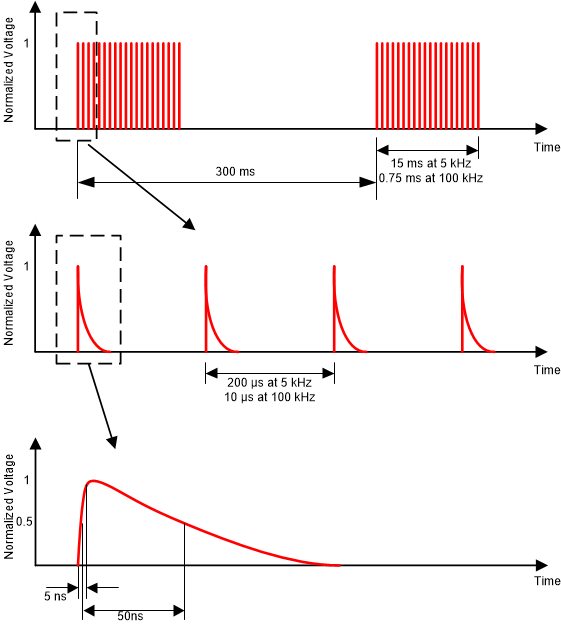SLLSF79B April 2021 – September 2021 THVD1439 , THVD1439V , THVD1449 , THVD1449V
PRODUCTION DATA
- 1 Features
- 2 Applications
- 3 Description
- 4 Revision History
- 5 Pin Configuration and Functions
-
6 Specifications
- 6.1 Absolute Maximum Ratings
- 6.2 ESD Ratings
- 6.3 ESD Ratings, IEC
- 6.4 Recommended Operating Conditions
- 6.5 Thermal Information
- 6.6 Power Dissipation
- 6.7 Electrical Characteristics
- 6.8 Switching Characteristics (THVD1439, THVD1439V)
- 6.9 Switching Characteristics (THVD1449, THVD1449V)
- 6.10 Typical Characteristics
- 7 Parameter Measurement Information
- 8 Detailed Description
- 9 Application and Implementation
- 10Power Supply Recommendations
- 11Layout
- 12Device and Documentation Support
Package Options
Refer to the PDF data sheet for device specific package drawings
Mechanical Data (Package|Pins)
- D|8
Thermal pad, mechanical data (Package|Pins)
Orderable Information
8.3.2 Electrical Fast Transient (EFT) Protection
Inductive loads such as relays, switch contactors, or heavy-duty motors can create high-frequency bursts during transition. The IEC 61000-4-4 test is intended to simulate the transients created by such switching of inductive loads on AC power lines. Figure 8-4 shows the voltage waveforms in to 50-Ω termination as defined by the IEC standard.
 Figure 8-4 EFT Voltage Waveforms
Figure 8-4 EFT Voltage WaveformsInternal ESD protection circuits of the THVD14x9(V) protect the transceivers against ±4-kV EFT. With careful system design, one could achieve EFT Criterion A (no data loss when transient noise is present).